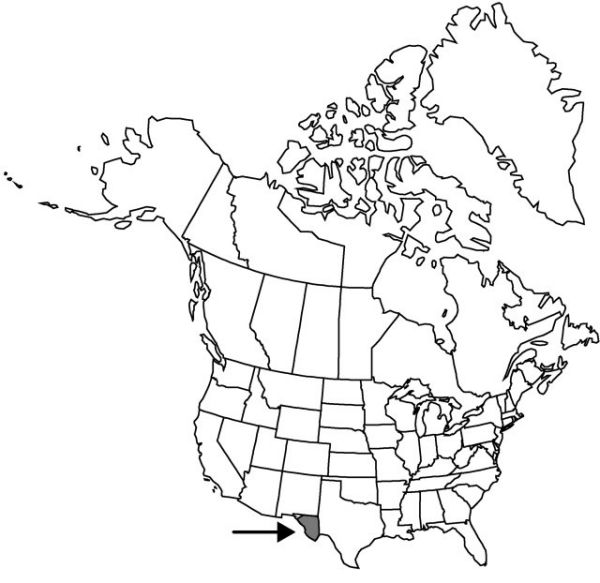Yucca faxoniana
Man. Trees, 121. 1905.
Plants solitary, erect, arborescent, 2.5–6.9 m, including inflorescence. Stems 1, simple or with 2–4 branches, to 5.1 m, average diam. 32 cm. Leaf-blade erect, yellowish green, 43–115 × 3.1–8.4 cm, rigid, smooth, glabrous, margins conspicuous, curling, filiferous, brown. Inflorescences erect, paniculate, often with proximal branches arising beyond rosettes, broadly ovoid, 5.5–25.5 dm, glabrous; peduncle 0.3–0.6 m. Flowers pendent, 4.4–12.4 cm; perianth campanulate; tepals connate basally into floral-cup 1–32 mm, white to greenish white, ovate, 3.9–10.8 cm; filaments averaging 2.2 cm from base of tepals, glabrous; anthers 1–6 mm; pistil 2.8–8 × 0.7 cm; ovary ca. 4.5–5 times longer than wide; style 4.5 mm; stigmas distinct. Fruits pendent, baccate, indehiscent, elongate, 3.6–13.6 × 1.8–3.6 cm, fleshy, succulent. Seeds black, 7.7 mm diam., 2.9 mm thick, smooth.
Phenology: Flowering late winter–spring.
Habitat: Rocky slopes, flat plains
Elevation: 800–2100 m
Distribution

Tex., Mexico (Chihuahua), Mexico (Coahuila)
Discussion
Trelease described the genus Samuela based on two species, Samuela faxoniana and S. carnerosana. K. H. Clary’s DNA study (1997) shows them to be closely related but genetically distinct.
Yucca faxoniana is often used for landscaping in arid and semiarid regions of Texas and New Mexico.
Selected References
None.
Lower Taxa
"thick" is not a number. "thin" is not a number."dm" is not declared as a valid unit of measurement for this property. "dm" is not declared as a valid unit of measurement for this property."average" is not a number.